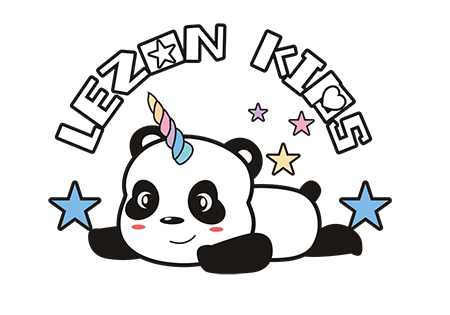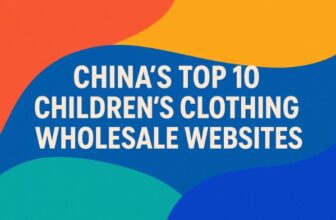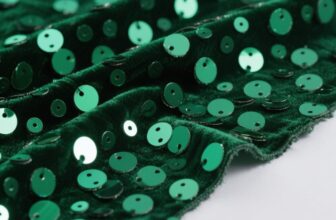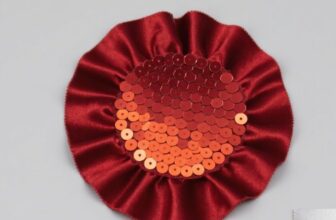Wholesale Kids Boutique Clothing: A Complete Guide for Business Success
 Wholesale kids boutique clothing is different from what large retailers sell by highlighting exclusive creations, premium quality, and exacting detail. Elegant clothes for kids are often limited in manufacture, made with high quality, and showcase unique designs that parents buy into for their children.
Wholesale kids boutique clothing is different from what large retailers sell by highlighting exclusive creations, premium quality, and exacting detail. Elegant clothes for kids are often limited in manufacture, made with high quality, and showcase unique designs that parents buy into for their children.
How Big Is the Market and How Is It Expanding?
Revenue for global children’s apparel reached $252 billion by 2023 and is on track to reach $325 billion by 2030, mostly due to strong performance in the boutique and premium parts of the industry. This surge is mainly driven by a number of important reasons:
- The growth in wages in developing places is opening new possibilities for premium clothes for children.
- Social media is helping make children’s fashion more popular and influencing fashion requests on Instagram.
- Community members buying each other quality clothing instead of cash
- Interest in sustainable kids’ fashion is increasing because of more eco-conscious buyers.
- Special outfit customs for everyone during special occasions
The boutique segment has seen an 8.2% growth rate each year over the past five years, much larger than the growth rate of children’s apparel overall. Their willingness to pay higher prices is visible in how fast the brand has been able to expand.
Target Demographics
To be successful with boutique children’s clothing, it is important to know who your main buyers are:
- Gen Z and millennial parents who put the emphasis on high quality rather than a large stock and like things to stand out
- Grandparents and their extended family often buy fancy gifts for significant celebrations
- Higher earning parents tend to have money left over after living expenses, so they need more clothing for their children
- Certain families use kids’ wardrobes to bring out their own personal taste
- Retailers wanting merchandise that stands out and is not found in the usual chain stores
Changes in Retailing by Region
Preference and how people buy differ from one geographical region to another.
For the North American Market
Products are popular when they are comfy, tough, and multifunctional, with shoppers often wanting organic and eco-friendly products. Essentials for parents are pieces that can go from a social gathering to a dressier event.
Fashions in this market are trendy, use fine shades, and are built to last. Greater agreement by consumers to pay more for products that stand out in quality and design.
There is an increase in business for the market, as its purchasing power goes up rapidly. Many customers prefer well-known brands and pay close attention to how a home is finished.
Designers in Latin America
Designers often use strong colors, fun patterns, and focus on styles useful for the whole family. Fashionistas are shopping more for specific events and for appropriate gifts.
Essential Considerations When Sourcing Wholesale Kids Boutique Clothing

To do well in the wholesale kids boutique market, you need to think about several important things that will affect your business.
Considering Quality and What to Use
The best boutique clothing is made using excellent materials and excellent workmanship.
What You Need to Know About Fabric Quality
- People like cotton, linen, and wool because they are both comfortable, breathable, and lasting
- The right weight of fabric for each type of garment and the season
- Texture variations help you find soft, gentle finishes that feel comfortable on sensitive skin
- Wash-safe colors: Dyes that do not fade when washed
- Shrinkage control means garments keep their shape after being washed
Information on the Details of Construction
- French seams, serged edges, or angular seams help prevent the edges of your fabric from fraying
- Stitching extra strength into parts of a shoe that may become worn
- Durability: Washers that stay buttoned, zippers that close every time, and snaps that stick
- Hem finish: Quality methods that help your clothing look good as time goes by
- Sizes are accurate, so clothes fit the same across the collection
What Safety Compliance Standards Are Required?
- Following the rules set by the Consumer Product Safety Improvement Act
- Testing buttons, zippers, and any decorative things for lead content
- Standards for flammability: Use flame-resistant treatments where needed
- Attach small embellishments securely so they won’t come off and become a choking hazard
- Safety from chemicals: They do not include formaldehyde or phthalates
Things to Think About in Design and Trend

Boutique brands stand out thanks to their special and unique designs compared to most others on the market.
Seasonal Fashion Forecasting
You need to examine information from international fashion weeks, trend forecasting groups, and what people often buy to know the latest trends. Good boutique brands stay fashionable and relevant by keeping their identity distinctive.
Unique Design Elements
- Proprietary prints: These are special designs and artwork created for a brand’s identity
- Trademark elements: Recurring features that represent the brand
- Special collections: They make items desirable and unique by being available only for a short time
- Partnering with influencers or artists for innovative designs
- Inspired by tradition: The latest versions of trusted children’s wear designs
Age Appropriate Designs
Good boutique designs take into account kids’ ages, but do not compromise on style. You need to think about the physical changes and play habits of different ages, plus what toddlers like, all while aiming for a nice and appealing design for shopping adults.
Associations With Sourcing and Manufacturing
Finding the perfect manufacturing partner is the single most important decision for a wholesale boutique.
Analyzing the Skills of the Production Team
- Experience in complete construction tasks and using advanced design techniques
- Fitting production capacities to the expected growth rate of the business
- Special discipline: Expertise in making or working with certain garment types or techniques
- The use of advanced machinery that helps in achieving the same good quality again and again
- Flexibility refers to being adaptable to changes in the design and to special needs
Having to reach a minimum order size can affect how quickly your cash flow changes and the way you handle stock. Older, more established companies often ask for greater batch sizes, but newer or smaller ones are more likely to be flexible. Well-managed wholesalers often find multiple suppliers to handle both the amount and the variety of products needed by their customers.
How Does Your Company Ensure Product Quality Meets Standards?
- Fabrics and components for your footwear are inspected before they are used in production
- Checking products for quality several times during the manufacturing process
- Before shipping, every final inspection protocol is fully performed
- The company uses testing methods such as washing, durability checks, and testing for safety compliance
- Systems for dealing with quality problems promptly and efficiently
Manufacturers need to stay in continuous dialogue with their suppliers, sharing progress, approving designs, and resolving any issues. When working internationally, organizations should pay more attention to cultural and language differences.
Building Retailer Relationships
Sustainable wholesale companies create close ties with their retail consumers.
Guidelines for Service Excellence
- Response time promises: Fast order requests and inquiries
- Order correctness depends on meticulous adherence to shipping conditions and specifications
- Consistent on-time deliveries assist retail planning
- Quick and fair resolution of problems as they come up
- Regular contact and relationship building help one to manage accounts
Marketing Assistance Initiatives
- High-quality product photos and stylizing pictures
- Product data: Accurate specifications, care guidelines, and selling features
- Fixtures for display: Merchandising aids and point-of-sale materials
- Resources for training: Selling technique and product knowledge
- Co-op marketing: Shared expenses for mutual benefit
Digital Transformation in Wholesale Kids Boutique Clothing

New chances for efficiency and expansion are provided by technology, which also keeps changing the wholesale environment.
Online Wholesale Portals
Wholesale buying has been transformed by digital markets:
B2B e-commerce has developed sophisticated features including real-time inventory visibility, automated reordering, and integrated payment processing on contemporary wholesale platforms. These systems give useful data for both suppliers and shops while lowering friction in the purchasing process.
Technologies for Virtual Showrooms
- Views of goods from 360 degrees: Thorough visual examination abilities
- Augmented reality fitting: Virtual try-on encounters for sizing decisions
- Coordinated clothing presentations and styling advice in interactive lookbooks
- Video examples: Fit information, fabric handling, and construction specifics
- Real-time product demonstrations and Q&A sessions are live streaming events
Order Management Integration
- Automatic stock level synchronization in real time
- Transparent manufacturing and shipping status are tracked via order tracking systems
- Automatic reordering: Easy replenishment for established vendors
- Customization choices: Build-to-order capacity for unique demands
- Returns processing: Simplification of exchanges and returns handling
Decisions Based on Data
For strategic planning, analytics offer absolutely essential insights.
Sales Pattern Analysis
Advanced data analysis uncovers patterns in product performance, seasonal trends, geographical preferences, and consumer behavior. This knowledge informs marketing plans, inventory management, and product creation.
Applications of Predictive Analytics
- Demand forecasting: Projecting future sales based on market signals and historical trends
- Trend spotting: Early appreciation of developing style trends
- Finding ideal stock levels for various goods and places via inventory optimization
- Client lifetime value: Knowledge of long-term partnership profitability
- Determining best pricing plans for various market segments using price sensitivity analysis
Dashboard systems that offer real-time visibility into important performance indicators including sales velocity, inventory turnover, client acquisition expenses, and profitability measures across several product lines and client segments enable modern wholesale companies to use business intelligence tools.
Ethical Manufacturing Considerations
Responsible production practices build brand integrity.
Fair Labor Standards
- Living wage commitments: Compensation that supports worker dignity and family welfare
- Safe working conditions: Proper ventilation, lighting, and equipment safety
- Reasonable working hours: Compliance with international labor standards
- Worker representation: Support for collective bargaining and worker voice
- Skill development: Training and advancement opportunities for manufacturing staff
Supply Chain Transparency
- Facility auditing: Regular inspections of manufacturing locations
- Supplier certifications: Third-party verification of ethical practices
- Traceability systems: Documentation of materials from source to finished product
- Impact reporting: Regular communication about sustainability and social responsibility efforts
- Continuous improvement: Ongoing efforts to enhance ethical and environmental performance
Partnering with the Right Manufacturer: The LezonKids Advantage
In the competitive landscape of children’s wholesale boutique clothing, selecting an exceptional manufacturing partner can make the difference between struggling to meet demand and scaling seamlessly with growth. Among the industry’s leading manufacturers, LezonKids Kids stands out with 15 years of specialized experience in children’s clothing OEM/ODM manufacturing.
Industry Expertise and Production Capability
LezonKids’s extensive experience serving over 50 renowned children’s clothing brands has established them as a trusted partner for businesses ranging from emerging boutiques to established fashion houses. Their impressive track record includes working with brands across over 100 countries and regions worldwide, serving more than 1,000 customers globally. This international experience provides invaluable insights into diverse market preferences and regulatory requirements.
Their state-of-the-art 8,000-square-meter workshop represents a significant investment in production capability and quality infrastructure. Equipped with 400 standard sewing machines, 150 specialized machines, and 20 steam ironing units, among other advanced equipment, LezonKids maintains a monthly production capacity exceeding 200,000 garments. This sophisticated setup enables them to handle complex designs while maintaining consistent quality across large production runs.
The intelligent production workshop incorporates modern manufacturing principles including lean production techniques, quality management systems, and efficient workflow optimization. This investment in infrastructure and processes ensures that LezonKids can scale alongside your business growth while maintaining the quality standards that boutique customers demand.
Design and Innovation Leadership
What truly distinguishes LezonKids from competitors is their commitment to exclusive, original design. Their dedicated 20-person design team provides complimentary design services, creating bespoke collections that ensure your brand stands apart in the crowded marketplace. This substantial design investment demonstrates their understanding that success in the boutique market requires more than just manufacturing capability—it demands creative innovation and style leadership.
The one-to-one design approach guarantees your exclusive styles won’t appear in competitors’ inventories—a crucial advantage in the boutique sector where distinctiveness is paramount. This exclusivity protection helps preserve brand integrity and prevents the commoditization that can erode profit margins in fashion businesses.
LezonKids’s design process incorporates trend forecasting, market analysis, and consumer insight research to create collections that resonate with target demographics while maintaining broad appeal. Their designers work closely with clients throughout the development process, from initial concept through sample refinement to final production specifications.
Quality Assurance and Certification
Every garment produced by LezonKids undergoes rigorous quality inspection through their dedicated quality control department. This specialized team examines products at every stage from initial sample to finished item, maintaining exacting standards that have earned ISO and SGS certifications. These internationally recognized certifications provide assurance that products meet strict quality, safety, and environmental standards.
The comprehensive quality management system includes incoming material inspection, in-process monitoring, and final product examination. Statistical quality control methods ensure consistent standards across all production runs, while batch tracking systems enable rapid identification and resolution of any quality issues that may arise.
This meticulous attention to detail explains why 90% of LezonKids’s customers provide exceptional satisfaction ratings and 60% develop ongoing, long-term partnerships. These impressive retention statistics reflect the company’s ability to deliver consistent quality and service that supports their clients’ business success.
Business-Friendly Policies
LezonKids’s business model is specifically structured to support brands throughout their growth journey with policies that address common pain points in wholesale manufacturing.
- Flexible Minimum Order Quantities: Understanding that growing businesses need flexibility, LezonKids offers competitive MOQs that reduce inventory burden and financial pressure. This approach enables smaller brands to access high-quality manufacturing while managing cash flow effectively.
- Comprehensive Sampling Services: For established customers, LezonKids provides complimentary sampling services that accelerate product development and reduce time-to-market. This investment in client success demonstrates their commitment to long-term partnerships rather than transactional relationships.
- Photography and Marketing Support: Recognizing that effective product presentation is crucial for wholesale success, LezonKids offers photography services that save clients time and marketing expenses. Professional product imagery is essential for online catalogs, sales presentations, and marketing materials.
- Certification and Compliance: Each product carries comprehensive certifications ensuring peace of mind regarding product safety and regulatory compliance. This attention to compliance requirements is particularly important for businesses serving international markets with varying regulatory standards.
Sustainability Commitment
Production quality is valued at LezonKids and they also prove their commitment to the environment by leading eco-friendly activities. Efficient lighting, efficient ways to heat and cool and where possible, using renewable energy sources are all features of their workshop. This efforts fits consumers’ growing demand for sustainable manufacturing practices.
Partners of sustainable material sourcing in Levi are certified suppliers of organic cotton, include recycled fibers and use low-impact dyes. These green packaging methods help the environment and do not compromise how well products are packaged when they are shipped. The design process for recyclable items takes end-of-life use into account and supports circular economy ideas.
These sustainability efforts position LezonKids as a forward-thinking partner for brands that recognize environmental responsibility as both an ethical imperative and a competitive advantage in today’s market.
Conclusion
Whether you’re launching a new boutique line or expanding an established children’s clothing brand, understanding these industry fundamentals while partnering with experienced manufacturers like LezonKids provides the foundation for sustainable growth and market differentiation in the dynamic world of children’s boutique fashion. When market interest, customer wants and technology develop together, well-planned wholesale children’s clothing businesses succeed and help form long-lasting relationships with customers, retailers and stakeholders.








